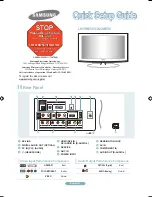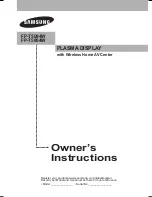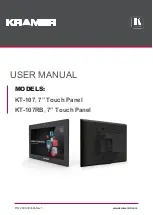
32
TS9000/TS9050 TouchStar Systems User Manual
3 - BASIC OPERATION
the touch system coordinates to screen coordinates, thereby
allowing the application’s display to fit on the TouchStar’s
video display.
After initializing the system, the program must establish a
list of active target areas which correspond to the current
graphics menu. The target manager does this by loading a
specific set of targets from a previously created target
database.
To process touch input, a touch system handler and the
target manager are used. When a touch is detected, the main
program module calls the target processing function from
the target manager, which in turn, calls a low-level input
routine from the touch handler. The low-level routine
accepts and processes touch reports and exit reports while
polling other input devices.
When writing touch-based applications, it is important to
provide visual feedback to the user that their input has been
accepted. Without some form of feedback, it is easily
assumed that the system is not functioning properly.
Reversing the touched icon or “zooming” to the next screen
are two examples of visual feedback.
• Touch Library
The touch library manages the application’s touch targets,
and also sends and receives information from the touch
system and the CPU.
A touch target is a very specific area of the display screen
that the user touches to accomplish a task. The target
consists of two pieces – a graphic icon representing the task
or function to be performed, and an invisible touch target
that resides directly over and completely contains the
graphic icon. The touch target should be at least as large as
the end of a typical finger, and should completely cover its
associated touch target so that a touch anywhere on the icon
will activate the target. Large, well-spaced targets allow
quick and precise selections. Touch targets should be
separated by large non-active touch areas (“dead” zones) to
prevent unintentional activation of more than one target at
the same time.
















































